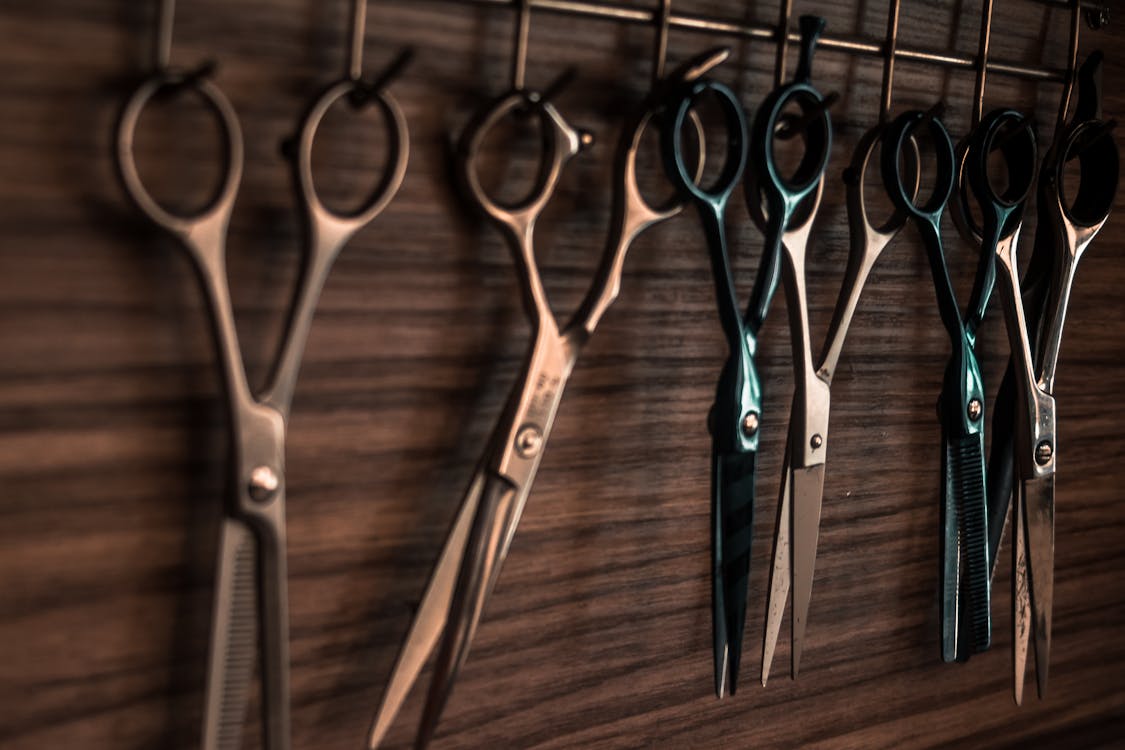Blade sharpening for Groomers
Sharpening service for Groomers
As a professional cutler, you know what it means to use sharp knifes. It not only ensures that your work is productive and accurate, but it also prevents potential injuries. This is where honing steel comes in. Honing steel is an important tool for anyone who is a serious butcher or chef However, precisely what is this tool? Why is it crucial to your knife-making skills? This article will examine these questions and many more while we talk about the advantages of honing your steel and how to utilize it correctly.
What is honing?
Honing steel (also known as sharpening steel) is a long-length metal rod having a rough, smooth surface. It can be employed to maintain and sharpen the edge on the blade of a knife. It is composed of two components that are the rod and the handle, which has a secure grip for easy handling. The rod's body is adorned with lines that extend lengthwise across the body. These ridges form edges when the knife goes over them. When you use honing steel properly, it gives an ultra-sharp edge on the blade of a knife that is more durable than were to use whetstones or electric sharpeners alone (1).
What are the benefits of using honing steel?
One of the major advantages of honing steel is that it helps extend the life the knives. By running your blades frequently across the ridges of your honing iron, you help keep them sharp for longer durations of time by aligning any edges that may have dulled or become jagged over time (2). This saves you both time and cash in the end because you don't have to buy new blades as frequently! Also, because honing steel isn't abrasive like other sharpening tools such as whetstones or grinders, it won't harm or wear down your blades over time (3).
Another benefit of using honing steel is safety: If used correctly it can prevent accidental cuts caused by dull blades, by creating an edge that is razor sharp each time you utilize honing steel (4). When cutting through tough materials dull blades are prone to cause nicks, slips or even slips. Honing steels frequently will keep blades sharp and minimize the risk of injury by an enormous amount.
How can I use my honing steel in a proper way?
Honing steels properly requires patience and precision. here are a few steps to get started:
- 1) Start by securing your knife perpendicular to the rodbut not against it, and at about 20 degrees (5).
- 2) 2. Move the blade gently along one side of the rod in steady intervals until you reach the tip; then repeat this motion on the opposite side, using light pressure throughout every movement (6).
- 3.) You must ensure that you maintain a consistent angle throughout each stroke--too little angle can cause an ineffective edge, while excessive angles can harm your blade (7).
- 4.) Once each side is completed evenly, slowly move up toward its bottom until the entire area are addressed before repeating strokes from the tip to the base multiple times, based on the sharpness you wish your blade's edge to be.
- 5) Then, you can finish by wiping any metal shavings with the help of a damp cloth, before saving them to use in the future!
Conclusion
In the end, honing steels are essential devices for any cutlery lover who wants to get the perfect edge on their knives, without causing unnecessary damage or wear and tear caused by harsh tools like whetstones and electric sharpeners. They will not only help you save money due to extending blade life as well, but they can also help create a more secure and sharp cutting experience each time! Just remember: take care when you use them, and practice patience and precision with every cut. Good luck!
Sharpening Seated Knives
Serrated knives are useful for many different tasks such as slicing vegetables or cutting through meats that are tough. When the serrations on your knife become dull they're time to sharpen them. In order to do that, you need the diamond sharpening tool. A diamond sharpening tool is a vital device for any professional or home cook. It allows you to quickly and accurately sharpen straight-edge but also serrated knives and scissors.
The most efficient method to sharpen your serrated knife is by using a diamond cutting edge stone. This type stone is made of diamonds, and is extremely durable. The more hard the stone, the sharper the blade. Diamonds can cut through anything effortlessly. They are utilized to create jewelry , and are very expensive.
There are a variety of methods to sharpen your sharp knife, without spending thousands of dollars. You can make use of a standard filet knife, a bench grinder, perhaps even sandpaper.
There are various kinds of stones available in local hardware stores. Some prefer Emery paper that is less expensive than a diamond stone. If you're looking to achieve the best outcomes, then go for a diamond stone.
What is a diamond that sharpens steel?
A diamond sharpening iron (also called a honing rod) is an indispensable tool to keep the kitchen knives sharp. It features a diamond abrasive surface, which makes it ideal for sharpening straight-edged blades as well as serrated edges. The diamond's fine grit surface can remove burrs as well as nicks from the blade edge while also rearranging the fibers of metal so that they are perfectly aligned when reattaching the edge of the blade. This makes sure that the knife will keep its sharp edge longer than with other types of rods or sharpening stones.
Using diamond Sharpening Steel to Sharpen Serrated Knives
Sharpening serrated knives involves specific methods that differ from the ones employed for straight-edged knives. Before you use your diamond sharpening tool make sure you read your product manual carefully as the directions can differ according to the kind of rod you've purchased.
- Step 1: First, utilize a soft cloth to clean off any food or debris that may be on the blade. After that, you'll use your diamond sharpening device to make the blade sharper.
Step 2. Take the handle of your diamond sharpening steel firmly in one hand, and then hold the blade of your serrated knife in its long surface at an angle ranging between 20deg and 30deg relative to its lengthwise side (as depicted on Figure 1.). - Step 3: Slowly move the knife along its lengthwise edge by alternating back and forward motions until all serrations have been brushed on it several times (as shown in Figure 2.). Don't push too hard or move too fast, as this could cause damage to both your knife's edge and surface of the rod that you are honing!
- Step 4: After all of your knife's serrations have been brushed across it multiple times, repeat Step 3 with each individual serration until you have the desired results (as illustrated on Figure 3).
- 5. To close the process, you should give every serration a final smoothing stroke using moderate pressure. Clean off any residue left behind with a soft cloth before storing them away safely!
Conclusion
Sharpening serrated knives is a bit of a hassle If you're not aware of what you're doing; however with the proper techniques and proper care it's simple to keep these tools well maintained with just a few strokes of a high-quality honing rod such as a diamond sharpening steel! Follow these guidelines whenever you're needed to sharpen or alter the shape of your knife's edges. You'll be thankful you took the time!
Find more here:
Zdravje in Dom Kombuča shears sharpening knife cutting tools

